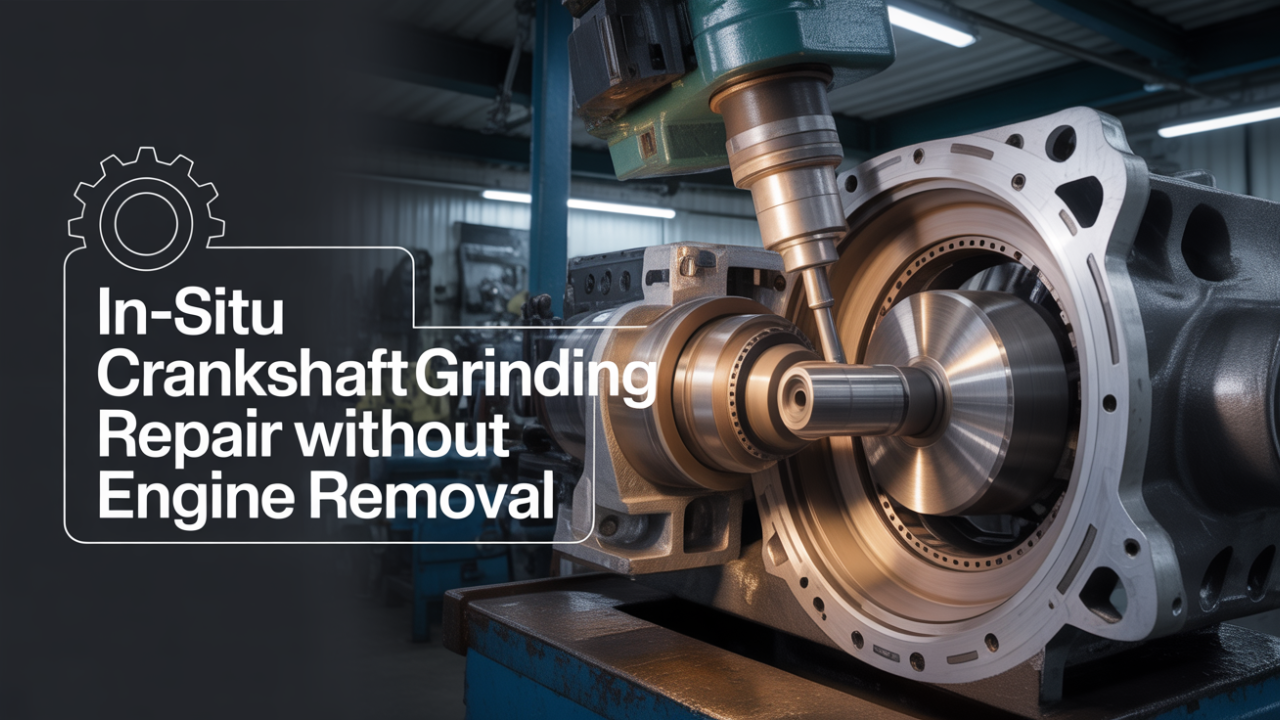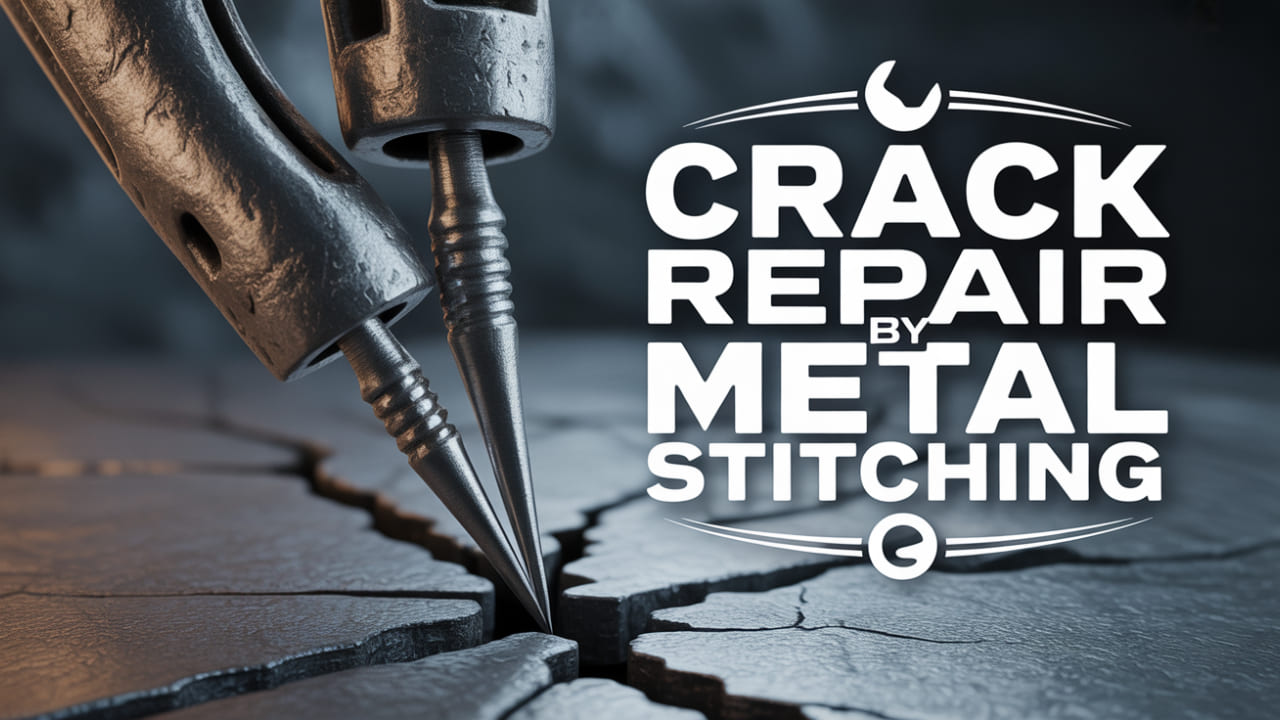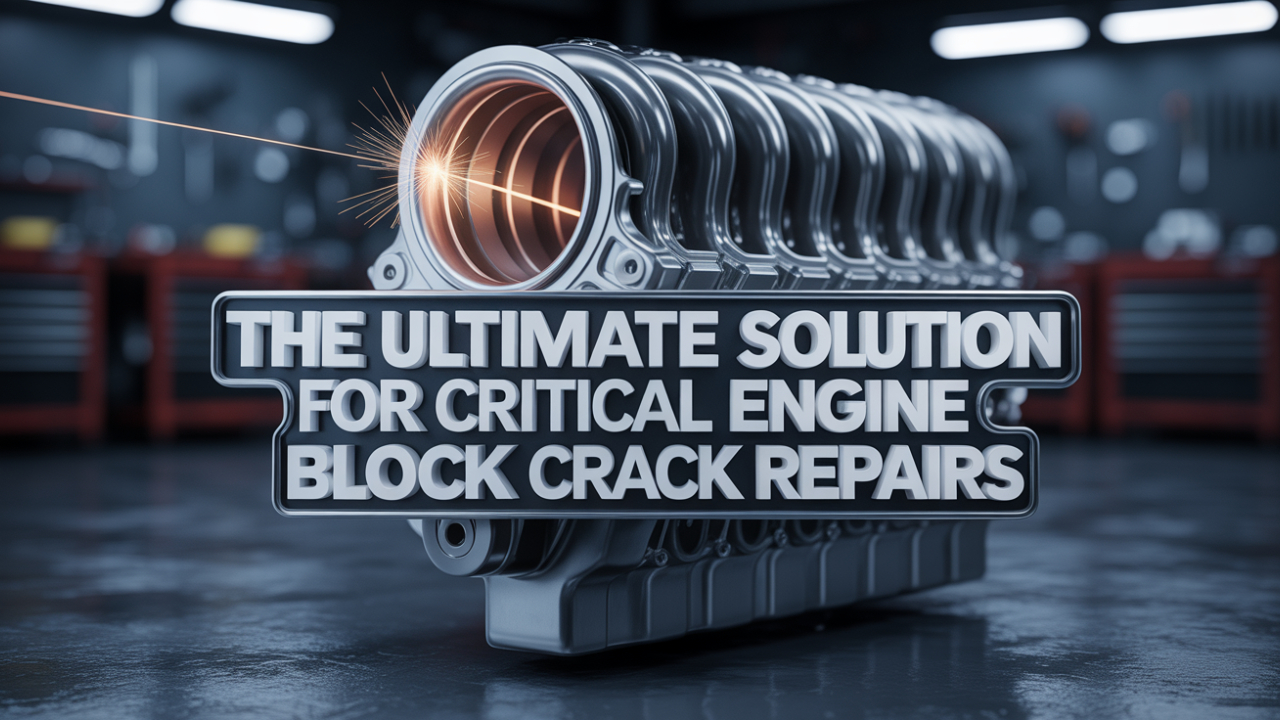Compressors are one of the most crucial parts of marine engines and industrial plans, and their shafts actually take a lot of pressure during operation. Constant heat, pressure, as well as friction slowly damage the shaft surface, which can even lead to poor performance, extra fuel use, and sometimes it may also result in sudden breakdowns. Replacing a compressor shaft is very costly, but compressor shaft grinding provides a smart and affordable solution.
It restores the shaft’s smoothness, accuracy, and strengths so that the machine works like new again. In this blog, we’re covering the essentials of compressors, shaft grinding and restoration. From common causes of damage to their process, cost benefits, and simple maintenance tips, this guide will help you understand why restoration is always the smarter choice over replacement.
What is Metal Stitching Engine Block Repair?
Metal stitching engine block repair is a process of cold repair technique that is used to fix crack and damage in engine blocks, cylinder heads, compressors along with other heavy machinery parts. Unlike welding, it doesn’t melt the metal, which actually maintains the original strength and durability of the component. And, this method is a reliable, long-lasting solution that restores performance, reduces downtime, and avoids the high costs of replacement.
How Does Metal Stitching Work?
- Inspection and Cleaning:Initially, the damage areas prepared and measured
- Drilling Holes: Small holes are properly drilled along the crack to anchor the stitches.
- Inserting Stitches: Now, hardened metal pins are inserted and locked to pull the crack together.
- Finishing: The surface is smoothed and machined in order to restore original shape.
- Testing: The repaired component is checked for strength and alignment.
This process perfectly preserves structural integrity, extends equipment life, and provides a cost-effective alternative to full replacement.
Understanding Engine Block Cracks: Causes and Consequences
Engine block cracks are one of the most serious issues a machine can face, this is because these cracks directly affect performance, safety, as well as reliability. These cracks occur when the metal experiences stress beyond its actual capacity, and this leads to structural weakness. Common cause include:
- Thermal Stress: Rapid heating and cooling cycles can even create expansion, and contraction, and it eventually forms cracks.
- Mechanical Overload: Excessive pressure or improper handling during operation can damage the block.
- Corrosion: Exposure to moisture, chemicals , or even poor-quality coolant accelerates metal deterioration.
- Manufacturing Defects: Furthermore, minor flaws in casting or machining can sometimes grow into serious cracks over time.
The consequences of untreated cracks are severe, decreased engine efficiency, oil or coolant leaks, higher fuel consumptions, unexpected breakdowns, and in extreme cases, the whole engine failure. So, identifying and repairing cracks promptly is really important to maintain machinery performance and avoid costly replacement.
The Metal Stitching Process: Step-by-Step Overview
1. Inspection and Cleaning
Before repair, the engine block is inspected in order to determine the crack’s size and severity. Cleaning the area actually removes dirt, oil, and even corrosion, and creates a solid surface for metal stitching engine block repair.
2. Drilling Stitch Holes
Now, small holes are properly drilled along the crack in order to act as anchors for the metal pins. These holes actually ensure the damaged surface can be pulled together accurately and securely.
3. Inserting Metal Stitches
Hardened metal pins are placed into the drilled holes and locked with a cold-metal filter. This gradually draws the crack together, and restores strength and stability to the engine block.
4. Finishing and Machining
Once the stitches are in place, the surface is smoothed and machined to restore its original shape and alignment and this makes the repaired areas ready for operation.
5. Quality Testing and Verification
Finally, the repaired block is thoroughly tested for alignment, durability, and strength. This ensures the metal stitching engine block repair is truly reliable and can even handle continuous operational stress.
Why Metal Stitching Outperforms Traditional Repair Methods?
1. Preserves Structural Integrity
Unlike welding, which melts the metal and can weaken the surrounding area, metal stitching is a cold repair technique. It restores the engine block or component without even altering its original strength, and keeps the part durable and reliable under continuous stress.
2. Cost-Effective and Time-Saving
Replacing an engine block or heavy machinery part can be extremely expensive and time-consuming as well. Moreover, metal stitching repairs the existing component and reduces downtime and costs and provides a solution that’s always strong as a new part.
3. Minimizes Risk of Heat Damage
Traditional welding generally generates high heat that can warp or distort metal, potentially causing misalignment or further cracks. Metal stitching avoids heat entirely, and preserves precise tolerance and maintains optimal performance.
4. Long-Lasting and Versatile
Metal stitching works on a wide range of metal components, that includes cast iron, steel, and marine or even industrial parts. When executed properly, it provides a durable repair that can extend the life of critical equipment far beyond what exactly traditional methods can achieve.
Cost-Effectiveness: Metal Stitching vs Engine Block Replacement
When an engine block develops a crack, the immediate thought is always to replace it entirely. However, replacement guarantees a “new” part, it comes with significant costs, long downtime, along with various logistical challenges, especially for heavy machinery or machine engines. So, sourcing a compatible replacement can take days or sometimes weeks, and installation actually requires additional labor and testing.
On the other hand, metal stitching provides a high cost-effective alternative. By replacing existing engine blocks without even removing it from the site in most cases, it lessens labor costs, reduces downtime, and allows you to save money from expensive shipping or sourcing issues. The process restores structural integrity and keeps the overall cost far lower than full replacement.
Here’s a quick comparison for better clarity:
| Feature | Metal Stitching Engine Block Repair | Engine Block Replacement |
| Cost | 25–50% lower than replacement | High initial cost |
| Downtime | Minimal; often completed on-site | Longer due to sourcing and installation |
| Structural Integrity | Maintains original metal strength | New part, strong but may require alignment |
| Heat Damage Risk | None; cold repair method | Possible distortion from welding or machining |
| Application | Can be done on-site, versatile across industries | Requires full removal and fitment |
| Long-Term Reliability | Long-lasting if done correctly | Depends on installation and part quality |
Choosing the Right Metal Stitching Service Provider
Selecting the right service provider critical in order to ensure reliable and long-lasting metal stitching engine block repair. Expertise, experience, as well as the right equipment are key factors to consider. MPA Power Project stands out as a trusted choice for industries ranging from marine engines to power plants and heavy machinery.
When it comes to evaluating a provider, look for engineers with hands-on experience, proven success with similar repairs, and the use of advanced, calibrated tools. Timely service, quality assurance, and adherence to international standards like Llyod’s or IRS can make a significant difference in the repair’s durability. A talented provider not only restores the component but also ensures operational efficiency, minimal downtime, and cost-savings, making MPA Power Project the preferred partner for critical metal stitching needs.
Conclusion
Metal stitching offers a reliable, cost-effective, and long-lasting solution for repairing cracked or damaged engine blocks, compressors, and heavy machinery parts. By preserving the original metal, avoiding heat damage, and minimizing downtime, this technique outperforms traditional repair methods in both efficiency and durability. Understanding the process, its benefits, and proper maintenance practices can save significant time and costs for marine, industrial, and power-generation equipment.
For professional, precise, and dependable metal stitching engine block repair, trust MPA Power Project to restore your critical components and keep your operations running smoothly.
Metal stitching offers a reliable, cost-effective, and long-lasting solution for repairing cracked or damaged engine blocks, compressors, and heavy machinery parts. By Preserving the original metal part











No Comments